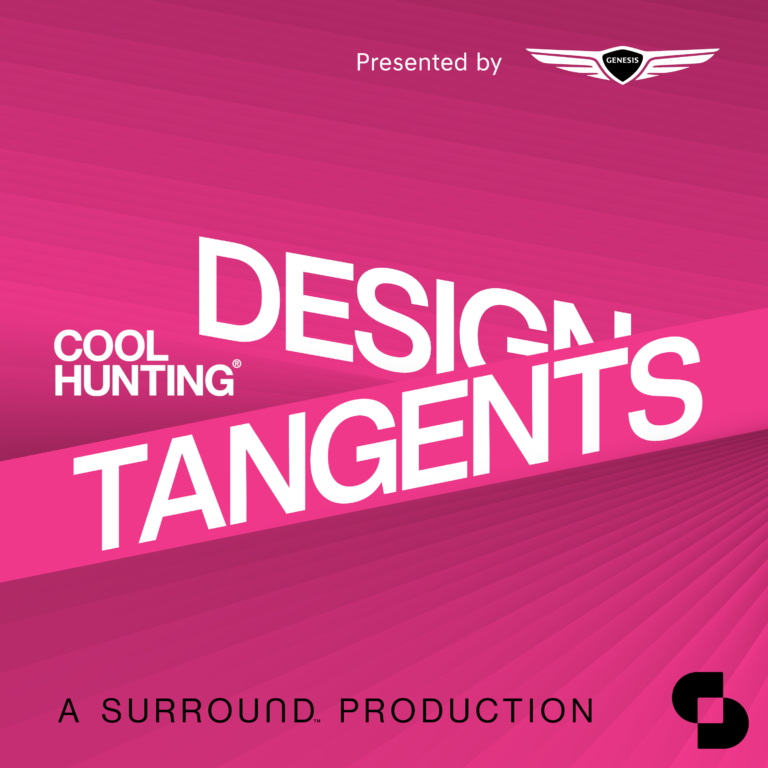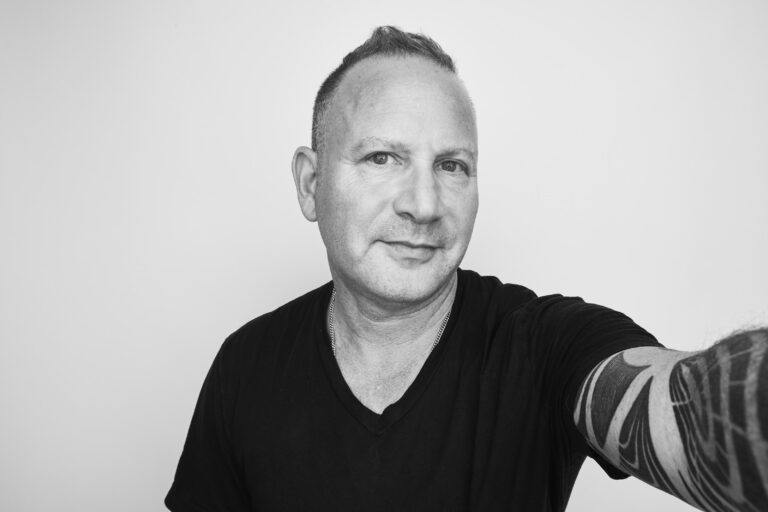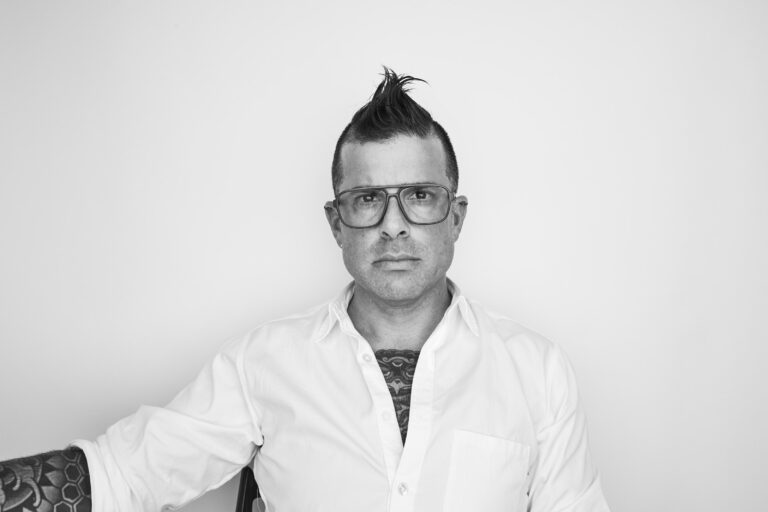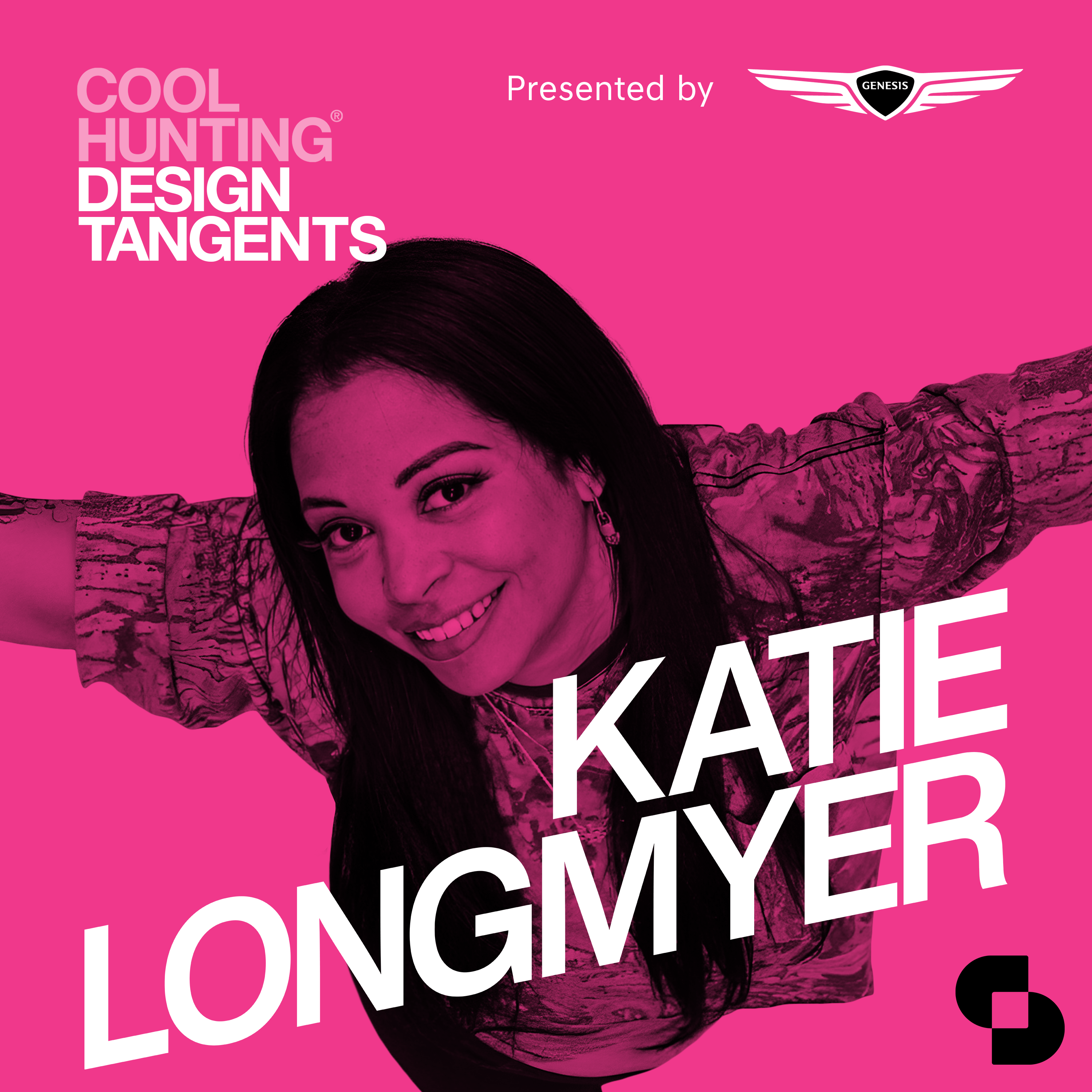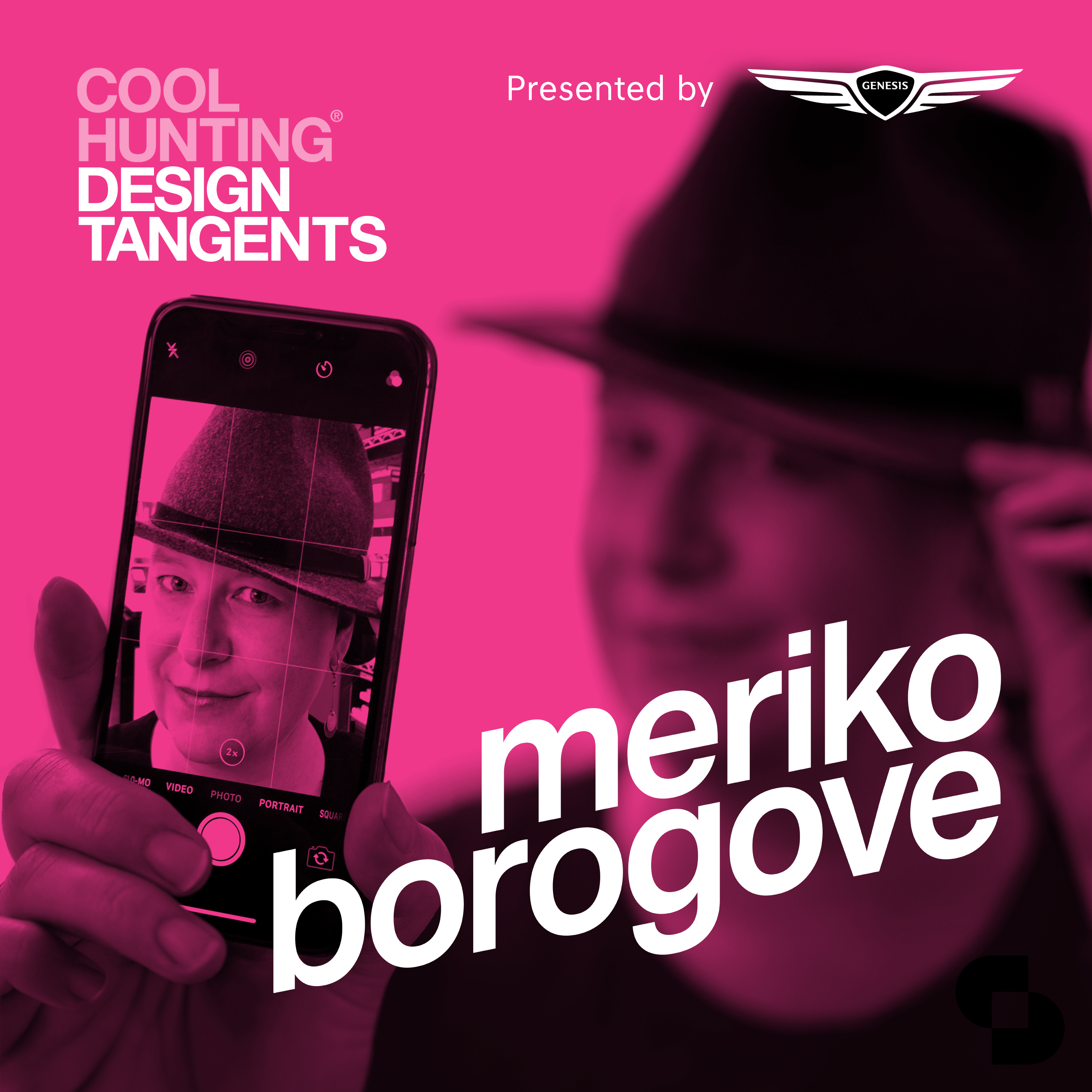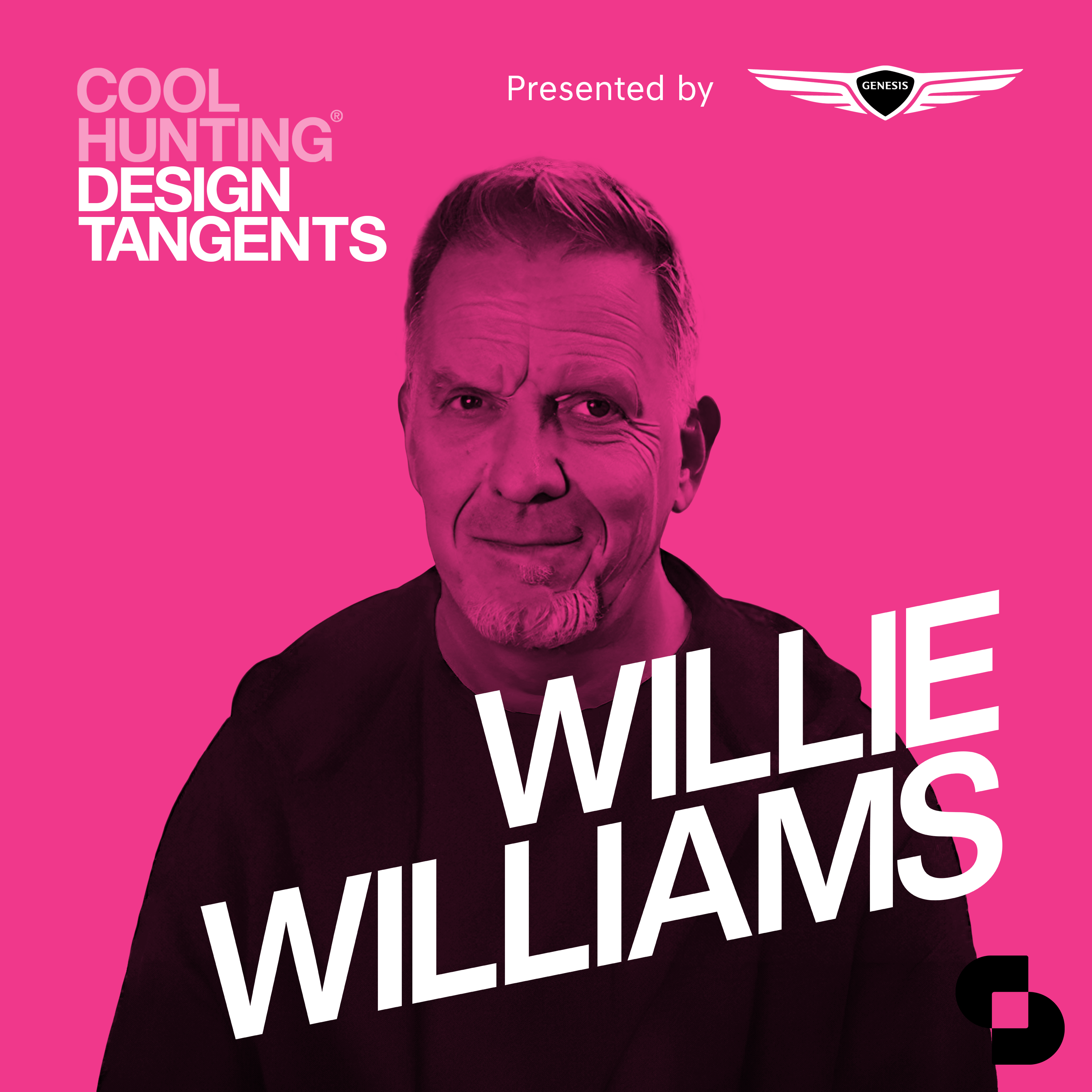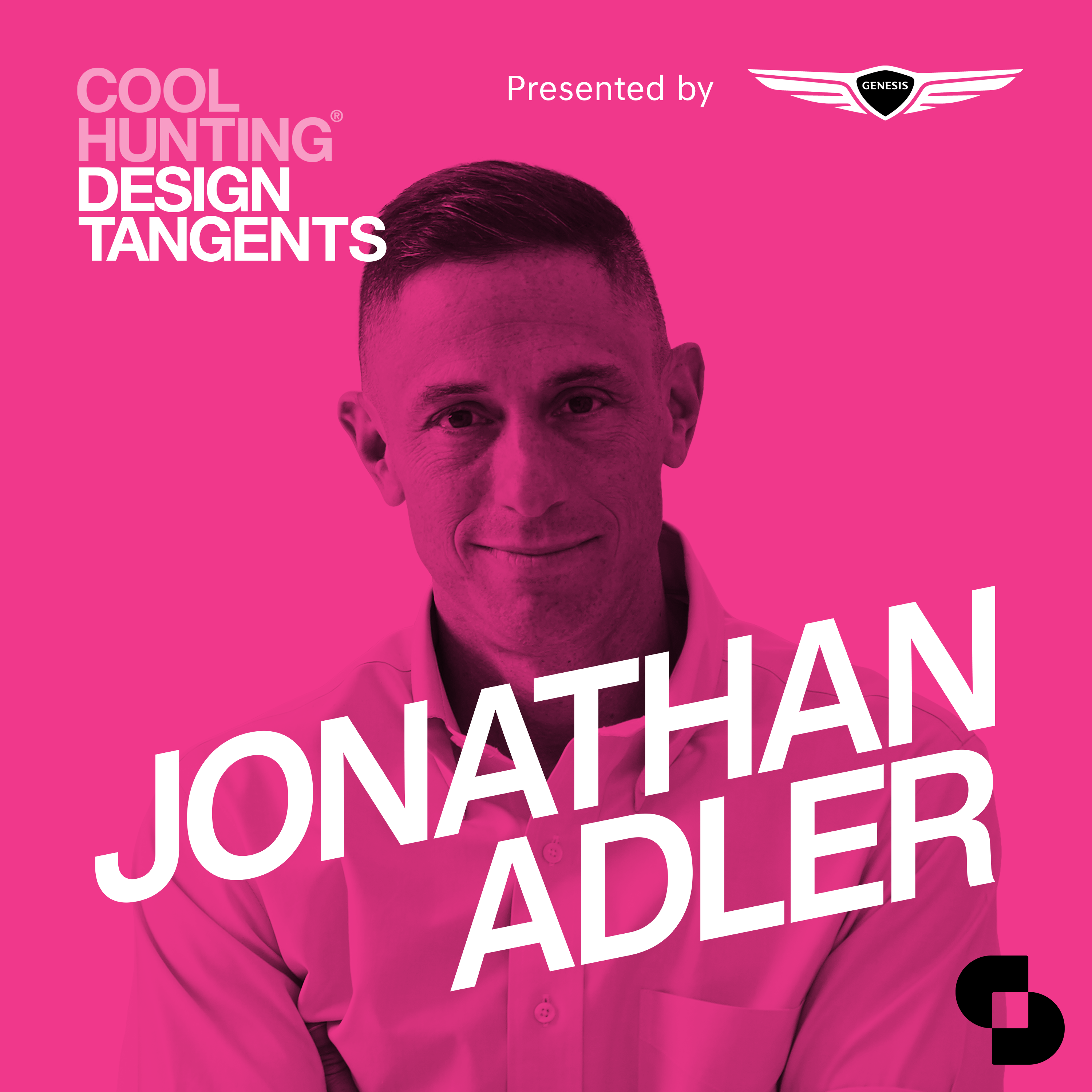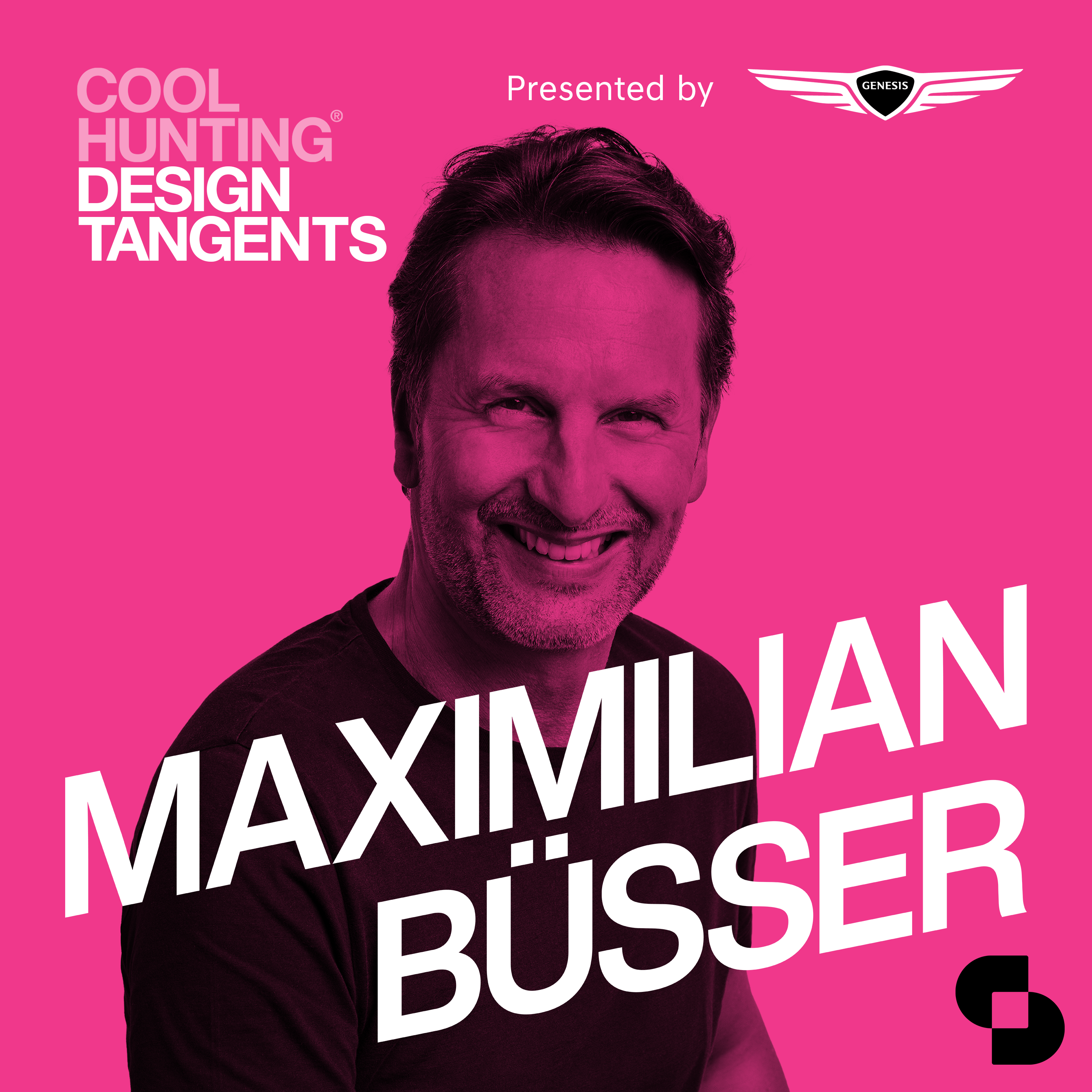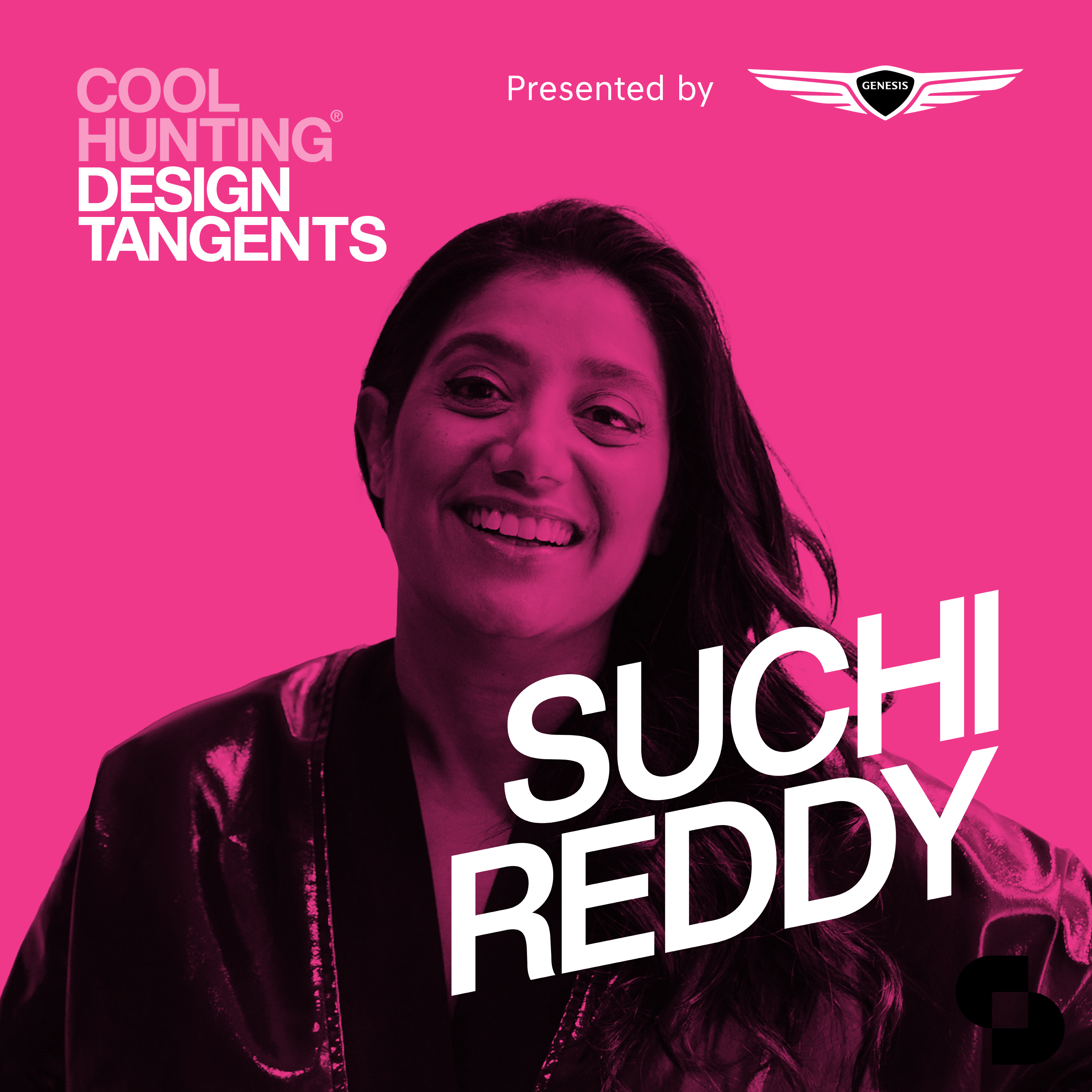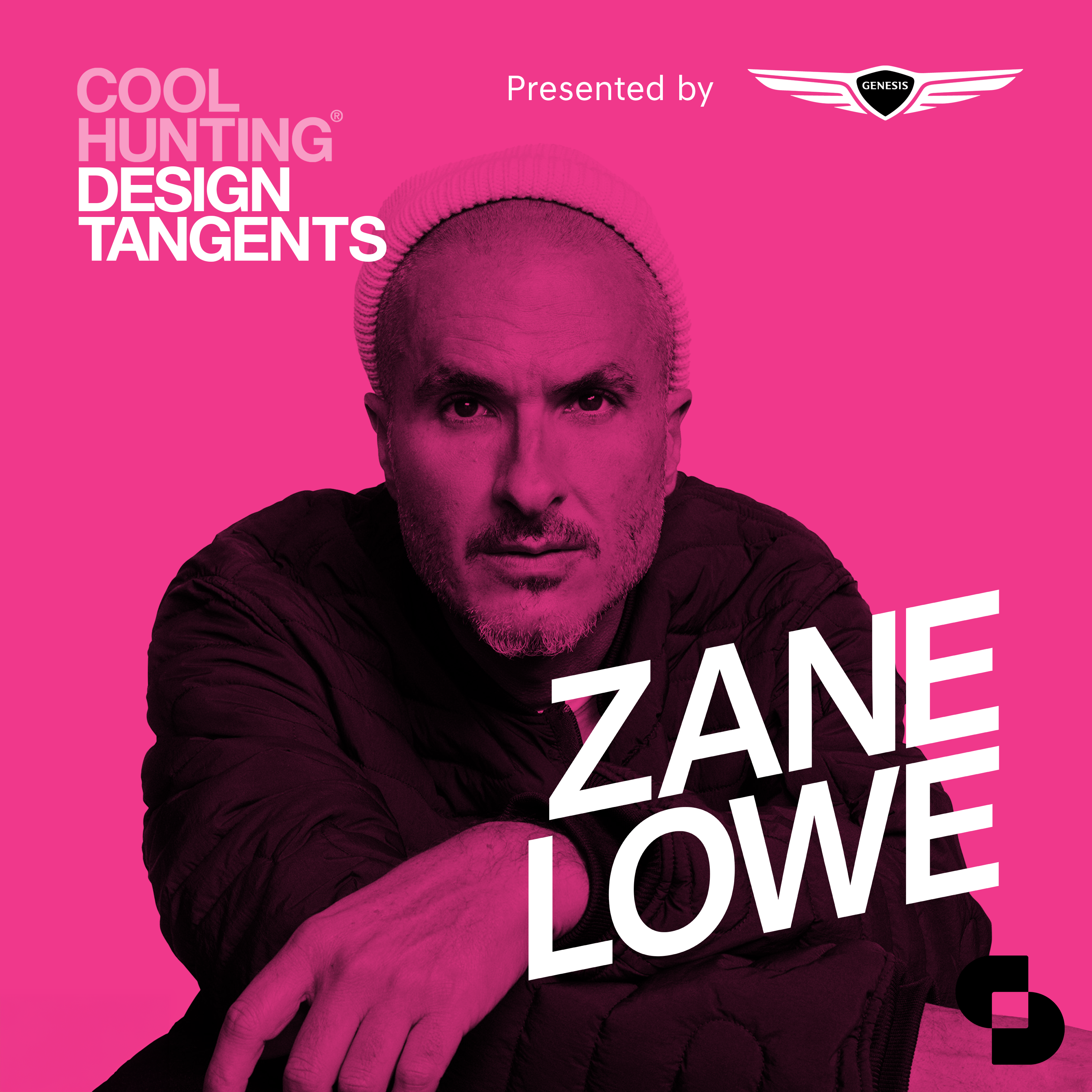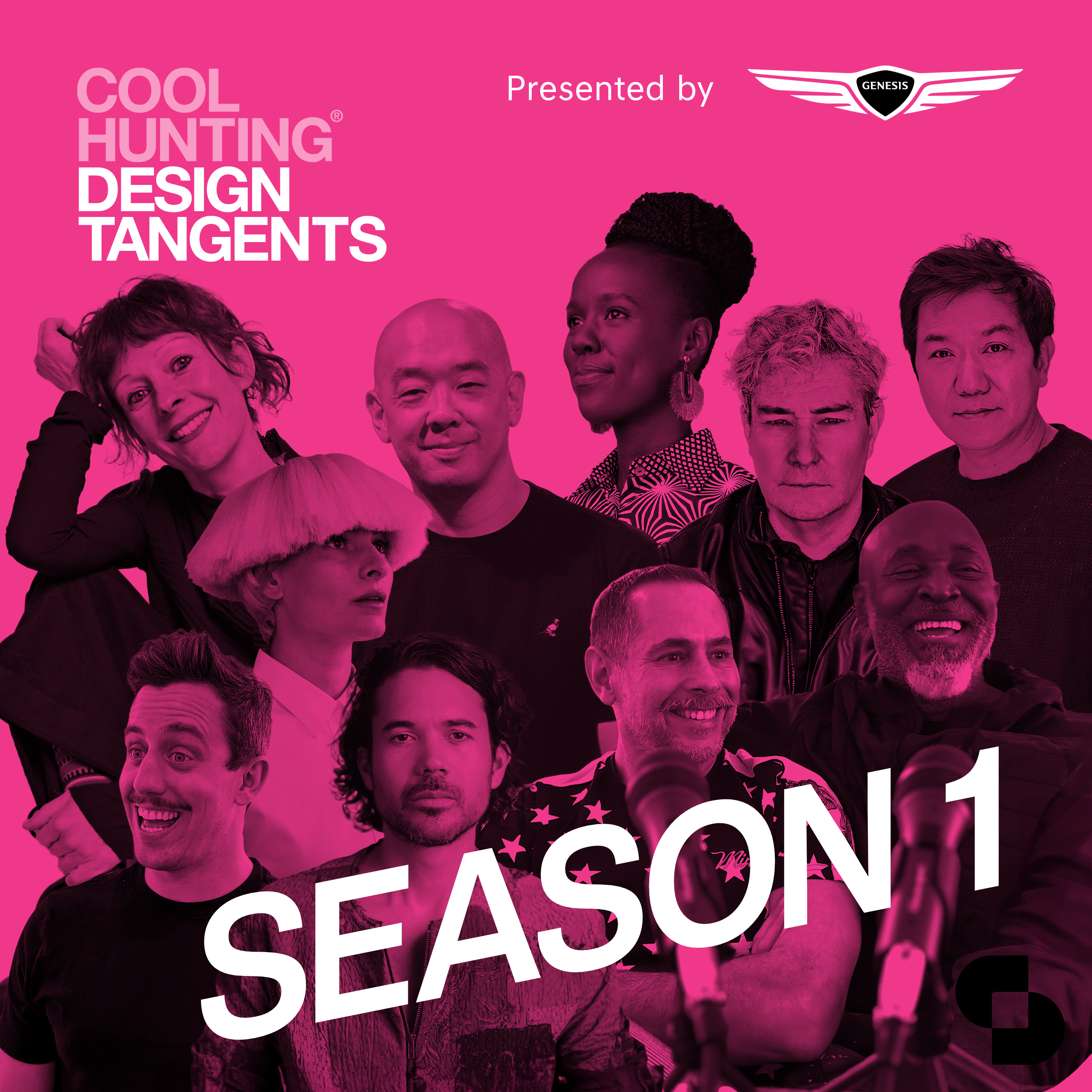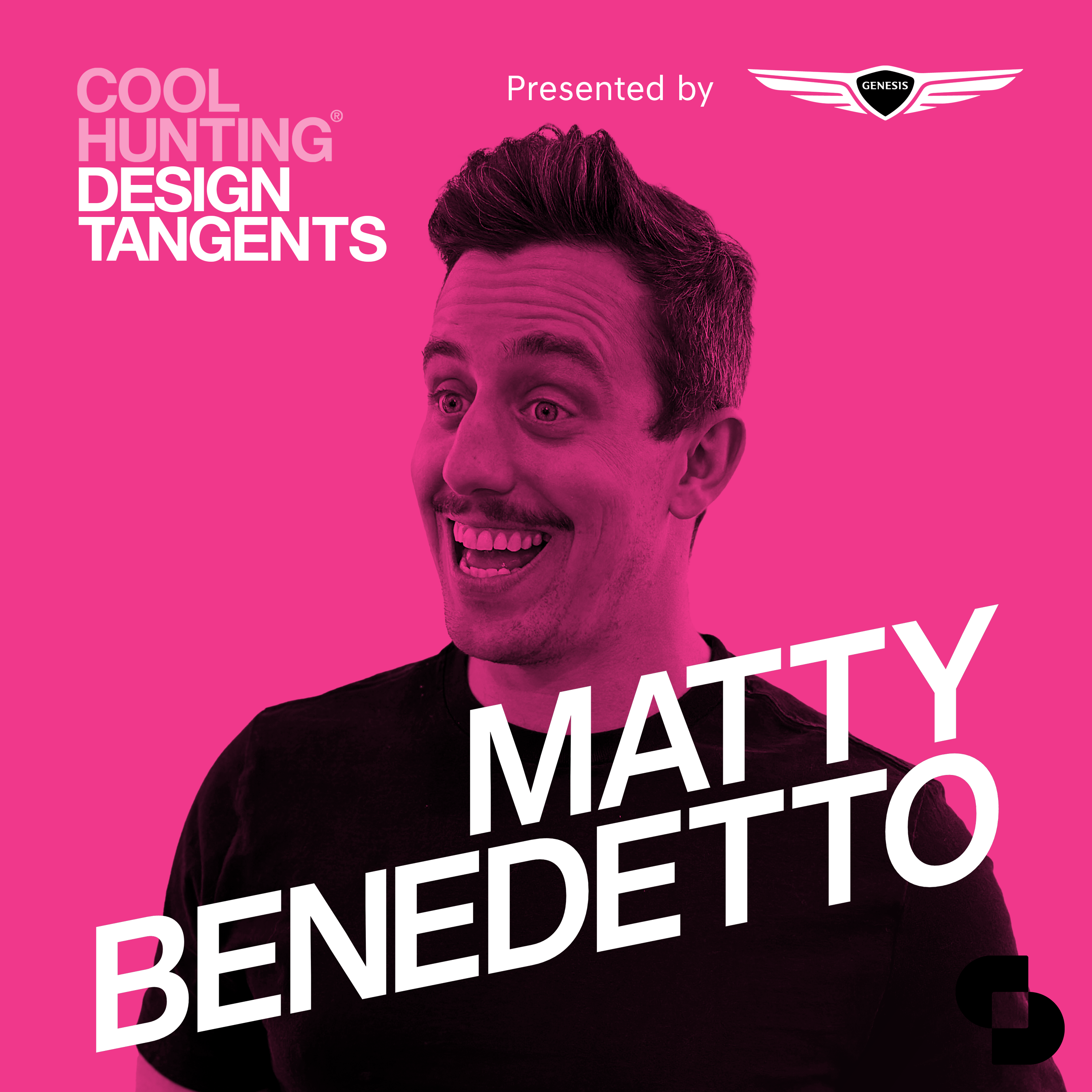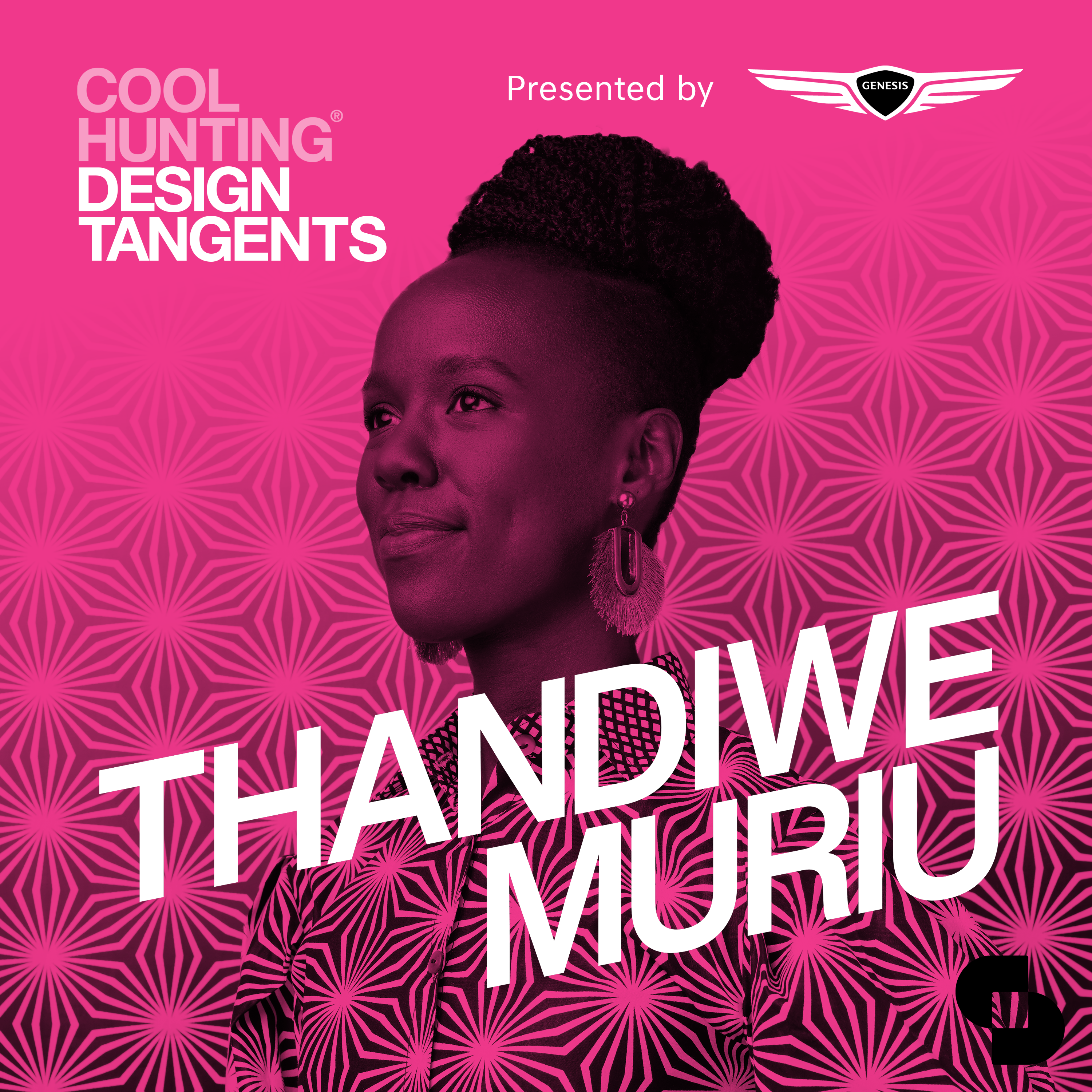Growing up in Milan, Paola Antonelli was surrounded by design and became aware of its importance when she noticed things that weren’t well designed. For nearly 30 years Antonelli—an architect, author, editor and podcaster—has been the Design Curator at New York City’s Museum of Modern Art. A long-time inspiration for us at COOL HUNTING, we were excited to sit down with her to talk about her perspective on design, what’s exciting her now, current and future MoMA exhibitions, her Design Emergency podcast and her work running the Research and Development department focusing on discourse around life’s moments.
- https://en.wikipedia.org/wiki/Paola_Antonelli
- https://www.moma.org/about/senior-staff/paola-antonelli
- http://momarnd.moma.org/salons/
- https://podcasts.apple.com/us/podcast/design-emergency/id1655108265
Photo by Marton Perkaki
Discover more shows from SURROUND at surroundpodcasts.com.
This episode was produced by Rob Schulte.
Design Tangents is presented by Genesis.
This transcript was generated by an automated service. In some cases it may be incomplete or inaccurate due to inaudible passages or transcription errors.
Paola: [00:00:00] The topics that we choose come from life. Sometimes they are protest, anger, and sometimes they are instead abstract and poetic. Like I remember one about this. Need to think of angels that would protect us and lift us from Earth, or you know. The next one that I’m working on is egg.
Evan: Welcome to Design Tangents podcast from Coal Hunting. Exploring the creative processes and inspirations that drive changemakers. I am Evan Orensten.
Josh: I’m Josh Rubin, and we are so excited for this episode with Paola Antonelli, the longtime senior curator for the Department of Architecture and Design, and the director of Research and Development at New York City’s Museum of Modern Art.
Evan: You know, Josh, I’m not one to be in awe of mainstream celebrities. Me neither. It’s people like Pella who really inspire me. Me too. And do you Right. The depth of her knowledge, her ability to see the connections between designs and designers and the way the public receives them and the thoughtfulness she puts into the narratives for each exhibition that she works on, really sets the standard for curation worldwide, in my opinion.
Josh: And she’s also incredibly eloquent and direct when she speaks. Yeah, we’re we’re fans. We’re fortunate to have known her for nearly the entire twenty-One years we’ve been doing cool hunting. It’s amazing. We’re so fortunate to have interviewed her so many times over the years. And here we go again.
Without
Evan: further ado. Paula, Antonelli,
Paola: Paula,
Evan: we’re, we’re living through some really. Difficult times as you know, as we’re recording this and then what’s happening in the world today. And design and violence, I know is a topic that you’ve thought a lot about.
Paola: Oh yeah. Uh, well, uh, it’s, uh, it is another one of those topics that could not [00:02:00] find its location in a gallery.
But became something else like, you know, transformed itself. So I remember it was, I think it was 2013 when the 3D printed gun, uh, news hit the, uh, hit the waves. And, uh, I remember that I was really stunned by the idea that this. Libertarian thinker in Texas had decided to use the idea of open source that we all love so much and that we all think is the future of, uh, civilization and the idea of 3D printing that we also love so much.
Put them together. Open source 3D printing to let everybody with access to the internet. Print at home, a lethal gun by components. You know, the only thing that was missing was the bullet, and I remember how flabbergasted I was by the fact that all of these D, different components that I always thought of as good could become evil all of a sudden and turn.
On their head. So I remember that I started thinking of the fact that I was so naive to think that design was a force for good, that it could also become a force for evil. And I started thinking of all the objects that have an ambiguous relationship with violence, right? So I. I spoke about it with a colleague, Jamer Hunt, uh, not at MoMA.
He’s outside a design writer and educator, and we decided to make a list of all these objects and then ha present it to MoMA as an exhibition, and MoMA did not go for the idea of the exhibition. That happens often, meaning we all get rejections and sometimes you just shelf something or you just forget about it, and instead, Jamer and I were thinking that it was really necessary to speak about that as soon as possible.
We wanted to explore the manifestations of violence in contemporary society. By looking at these objects, objects that were gorgeous, but really dangerous, like ninja weapons, right? Or that were almost too benign to be [00:04:00] considered a real response to evil like the. The, the prison in Norway where the guy that had killed 90 kids on the island was held.
You know, so all of these different manifestations or Temple, Grandin’s, redesign of this slaughterhouse, you know, does it make sense to find a more humane way to kill cows? You know, so all of these different aspects. It became a website. A website in which, um, we would write a little introduction and then there would be somebody, an expert speaking about the object.
And then there would be a question asked of the audience. And then there would be comments. And for instance, for Temple Grandin, there were like 150 comments. ’cause you know, vegans were. Like super crazy about that. And instead, when we talked about the death penalty, there were like four comments, which was very funny.
But, um, that was an opportunity to talk about something extremely serious using design. And, uh, it really gave us a sense of how much we can do by focusing on objects and on the work of designers. And in a way, it also helped with the salons, right? So once again. Culture, uh, creativity, design, architecture.
They’re not just luxury or just, you know, necessary functional things or problem-solving. No. They really are a way to deal with living together in a world that is becoming more and more complex and, and hard to inhabit. Bella
Josh: you, you grew up
Paola: in Milan. I did
Josh: indeed. And it’s such a design forward city. I’m really curious what your.
Like what your earliest memory of realizing what design is?
Paola: Hey, I really cannot tell you because I grew up with it and I maybe it’s, maybe it’s a good thing that I cannot tell you because that means that design was so normal that [00:06:00] I didn’t even know it really was a thing. Right. Which is. Great, because I feel that too many people have too much reverence for design and therefore don’t really jump into it.
Right? So for us, it was normal if you needed a coffee maker because yours was broken. You went downstairs across the street, no fancy place, and you would get a Pialetti, right? So the normalcy of design made it so that I could recognize bad design more easily than I could recognize good design. Mm-hmm.
Josh: Did you, did you see bad design in Italy or was it once you, uh, left that you started to Oh, no, no. That you
Paola: started to see, oh no. There’s a lot of bad design in Italy. Are you kidding? And actually, when I moved to New York, my dad gave me a horrible, um, a kind of simil mosaic, uh, Flower vase with like gilded fake tiles.
It was just like the most horrific thing. And I said, dad, what are you doing? And he said, well, you need some bad taste in your life. I am like, okay, alright,
Evan: that’s, it’s really funny. You know, we see you often in Milan during Design Week, and one of the things I love most about it is seeing how, of course it’s a big industry event, right?
And there’s a lot of professionals there and designers running around, but you also see so many just civilians there and so many school children. To your point, you see little kids. Eight years old, 10 years old, going to these installations there during design week. And I always find that so powerful because I feel like I never got that growing up in the U.S, like design was not on the map for
Paola: most of us.
If you grew up in, in New York, you got contemporary art, which I didn’t get. So I think that every city and every place has a different strength. Milan is definitely designed, and that’s what I’m always trying to tell people when the Salone is happening. My bakery, the, the woman at my bakery is like, how’s the Salone this year?
Do you have any extra tickets? So it’s really, [00:08:00] it’s what I’m trying to tell. People. It’s a, it’s a, it’s a city party. The design Design week, you know, it’s fantastic. It’s not like the fashion shows. Fashion is another Milan feature, but the fashion shows are exclusive exclusionary and instead, design week, if it’s great weather and the wisteria is in blossom, the whole city is out looking for design.
Evan: Do you feel it? It seems to us that when we go to other design weeks and other places that they. Don’t quite resonate as much, that more and more Milan becomes not just more important, but kind of like almost it’s, it’s the center of the universe in such a way that every other design event is. It just feels like they’re showcasing things that were already presented in Milan or that the people aren’t as engaged.
Um, it’s seeming to us like it’s really becoming Dominating, the world design stage. Well,
Paola: from your lips to God’s ears. I, I’m not too sure. I’m not too sure that I am in agreement. I mean, Milan is great and you see a lot, but I have to say sometimes when I go to the Netherlands, I also see very important, uh.
Actually sometimes even because there’s less to see, sometimes they resonate even more and then they’re gonna be also Milan perhaps. I think that what happens is that people really have fun in Milan. It’s a great place to be. So I think it heightens also your level of absorption, uh, and your openness to novelty.
And also it’s the sheer number of events and the sheer number of designers that are presenting. So definitely. It’s a more momentous, thunderous, and fun moment than any other place. But I have to say that there’s something good about smaller and more focused in some cases. Yeah,
Josh: I mean, if anything, that focus is harder, right?
Because it requires a better filter. It requires a better. And maybe that’s, maybe that, that’s, that would be the case [00:10:00] for Milan, where there’s just so much and, and everyone wants to be there versus some of these smaller city fairs where, uh, there there might be fewer designers or brands that want to participate.
As much as I love going to Milan for Design Week, the idea of being. At a smaller fair, a smaller exhibition is really, is very attractive to be able to focus.
Paola: Focus is a luxury these days. Yeah.
Josh: We know so much of the work that you do, uh, in a, in a curatorial role, the exhibitions that you, that you put together and you present at the MoMA.
Evan: For nearly 30 years, right?
Paola: Yep. I’m coming up in February. Wow.
Evan: Yes. Okay. We need to have a party for you, but we’d love
Josh: to hear more about the research and development side. You know, what, what, what that practice is and, and how it exists in the ecosystem of everything that you do. Because I imagine it’s critical.
Paola: It is. Something I’m so proud of, so I’m so glad you’re asking about it. I’m very proud of it because I’m still having fun after more than 10 years, and it’s still relevant ’cause it was actually designed to be relevant. So let me backtrack a bit. 2008. Financial crisis. I did two years of economics before switching to architecture, so I can still kind of feel what’s going on.
I can read the newspapers and I’ve carried a chip on my shoulder ever since The times of the Bocconi, because you know everything, whenever there’s a crisis, culture is the first that’s considered superfluous and it’s. Just thrown down the hill and instead everybody’s saying the financial sector is necessary to the destinies of society or the industrial sector, but especially the financial.
And in 2008 I was like gloating because I was thinking finally the financial sector that shows its, its true colors. And we have an opportunity to show that culture is the one that can provide the slow food, the kind of dependable [00:12:00] progress that we all need. And when I say culture, I’m never talking about Ivory, Tower.
I’m talking just about an attention to the patrimony of communities, of people, the way of thinking, the way of cooking, all of the different. Aspects of culture high and low that are usually considered just an addition to society. So I remember thinking, you know, in speaking with Glenn Lowry, the director of moment telling him, you know, this is our opportunity.
We can show that museums can be, and other cultural institutions can be the R&D of society. We can test ways to live here. And you know, at that time we did not open the department right away because we were all taking pay cuts not to fire anybody. So it was not a moment to open a new department, but we did it a few years later.
And this idea of museums being the R&D of society is what animates the biggest output of this department, which is the MoMA R&D salons. We started 10 years ago. And we are now at number 45. That’s the one that I’m organizing. The topics that we choose come from life. Sometimes they are very topical, protest, anger.
You know, depending, you can actually backtrack the 10 years moments of real anger and moments of how having to find out how to protest next AI, Web3, you name it. And sometimes they are instead. Abstract and poetic, like I remember one about angels in the deep moments of the Trump administration. This need to think of angels that would protect us and lift us from Earth or you know.
The next one that I’m working on is egg. Uh, and it’s really about the three of us could come up with 30 topics in the next half hour, right? So we have them all running, and then we just pick and choose. We did one in, uh, October, uh, of last year that was about team [00:14:00] sports. You know, this whole idea of being part of a team, being a bad team player, all of these different metaphors that we use all the time.
Well, let’s talk to a foot. Ball coach about it. Let’s talk to an athlete. So. Every single time it is, it gathers, uh, about five to six speakers that come from very different aspects. At least one of them is either a curator or an artist. I give an introduction and then we all dive in and the audience comes prepared because we send them a reading list beforehand.
So the questions are always marked. I have to say, I can count on one hand. The times that I heard a stupid question at the salons, which is fantastic, and of course you never exhaust the topic at all. You don’t answer questions in an exhaustive way, but you are at the end of the whole salon. You’re able to kind of frame the question better in a more constructive way, and you have a lot of food for thought.
Evan: All of that content is up at the MOMA site. So if you go to MOMA rnd.moma.org, you can see all of the salons are listed there and there are Highlights, um, and video and, and text there that describe what happened during those salons. Thank you.
Paola: Very true. Just go and joy. How do you
Evan: then take this, and then how do you move forward with it?
How does that become a tool, not just for MoMA, but for other organizations or other academic institutions? That’s
Paola: the biggest question I’m very bad at, that. I’m very good at in starting things, but then I don’t know, I, I’m not good at distilling products out of them. So, um, I’m always working with fabulous researchers and you know, right now there’s an R&D associate, her name is, is Christina moho, who’s trying to convince me to make a.
Book out of it. And I’m thinking, who’s gonna read a book? Uh, I mean, it’s not a book with the transcription of the salons. It’s, it’s actually new essays commissioned based on the past salons to [00:16:00] have a, a, a kind of updates. But I’m never able to to do things. So if you have any good idea, I’m all ears. But maybe because I’m always thinking who’s, who has time to read another book?
I would love to maybe. Distill very short videos and put them on TikTok or somewhere for each salon, trying to figure out what the essence of the salon is. But the truth is that, um, that’s the million dollar question and that’s where I’m really bad at.
Evan: I think one of the things we neglected to mention when we started talking about this is that you lead the R&D.
That’s one of your roles at the museum, is to lead R&D for. Organization. Well, it’s
Paola: not the R&D that you would think of normally, so I don’t, I don’t, uh, lead the R&D of technology. I have wonderful colleagues for that. I really, MoMA R&D is about this idea of the museum being the R&D of society. So it really is about showing the world.
The museums are life. They’re not only places where you go and look at art on the wall, but truly. If you are living your life and you lose somebody you really loved, well, there’s a salon about death, or you want to figure out how to protest. There’s a salon about protest. So it’s about really showing people that artists, curators, the place of the museum and the whole structure around it can help you live life and not just become between quotes educated.
Are
Josh: there direct connections from. Those salons from, from this R&D practice to what? Is open to the public in the, in the
Paola: museum. So as much as possible I try to separate my work as architecture and design curator from the salons because I would like the salons to represent all of the museums. So also the other departments.
But of course, sometimes I fall into my bad habits and I have a designer like the one about team [00:18:00] sports. We had Gabrielle Fontana, who’s a wonderful young designer that, uh, that has redesigned team sports. In general, I try to be inspired by the museum, connect to exhibitions, but not have a connection that is completely direct.
That doesn’t mean though, that sometimes I don’t have a salon on plastics, for instance, that I had some time ago. Uh, and when I do exhibitions, I have special programs that are connected to the exhibition. Sometimes they have the same format, but not necessarily. I really love to experiment with formats. A few years ago, there was an exhibition called Items.
There was about 111 items of clothing that had a strong impact on the world in the past 120 years. And for that, um, I, I used a format that had been invented by a friend, Alexandre Midal in France that is the alphabet. So the Abyssidarium actually, that’s how she called it. So we had. Twenty-six speeches each of seven minutes from a to Z.
Starting with air, uh, you know, the Air Jordans, so the Airs and the air Nike and ending with Z for zipper. A different speaker for each one. And that was so much fun, like a great day, uh, that went, yeah, from Hoodie to Sari, you name it. It was really great. Was that the,
Josh: the birth of the three-minute hoodie talk that you did for TED?
No,
Paola: for the hoodie talk. Um, the people at TED had seen what I had done in the Avicidarium, so they asked me to do it.
Evan: That was such a great show. Thank you. I think we saw you there at the opening. I think one of the things that it really, really accomplished was reminding us of all these great things that we had seen recently that maybe forgot about a show that was so accessible that it really spoke to everybody and you didn’t have to be super informed about, you know.
Deep design or, or know who all the creators are. You could go there and, and see the power of [00:20:00] design through pretty much like very familiar objects and, and fashion items That resonated, I think, really easily with a very
Paola: large audience. Well, thank you. That’s what, that’s what I try to do as much as possible.
You know, I, I. Believe that design is a real force to be reckoned with. That it’s, uh, an enzyme that helps progress happen without design, great revolutions could never become life, you know? So I try to explain that to an audience as wide as possible, and it’s easier to do with objects that do not create this sense of distance.
Than with others. So a few years ago, there was an exhibition that we did at MoMA in 2004, actually was called Humble Masterpieces, and that was the apotheosis of this, of this particular stance because it was a hundred objects ranging from the Post-It note, the Chupa Chups to the Jelly Bean to the paperclip that were part of the collection of MoMA.
And that showed that you have. Uh, a museum collection in your
Evan: drawer. Speaking of things stuffed in drawers, um, a lot more to dig into when we’re back from this break.
We’ve been loving Paula and I think a lot of others as well. I. Your podcast that you launched last year with Alice Rosthorne. And then for those listeners who don’t know her, um, she’s a great historian and academic, um, based in London about design. You’re quite good friends.
Paola: Thank you. We launched the podcast last year.
Design emergency exists since April, 2020 when we were all in lockdown. So Alice was locked down in London. I was in lockdown in New York. And um, my husband used to listen to Fat Joe, you know, the hip hop artist that every night was having his Instagram lies with his friends. And uh, and Larry told me, you know what, you could, you could do this.
And I’m like, well, yeah, not a bad idea. And I could do it with Alice. I mean, Alice and I have been friends for decades. We love and respect each other. [00:22:00] We had never done something together from scratch. So we started talking, we came up with the name Design emergency. We went to our friend Frith Kerr, who’s a sublime graphic designer in London.
She made the image for us quite right away and we were off to the races. And, uh, we started interviewing. Uh, the very first interview was Michael Murphy from Mass Design Group, um, who, you know, that’s a company that has done. Wonderful, uh, both memorials and humanitarian design, especially when it comes to hospitals.
And, uh, his company had been hired by Mount Sinai, a gigantic hospital in New York to help Mount Sinai Prep all of these new awards for covid patients. So they were elbow deep into in the emergency, and I think that the second was Alyssa Ecker, who. Is an illustrator at the cdc at the Center for Disease Control in Atlanta, who together with, uh, a colleague Dan Higgins, branded the Coronavirus because, you know, the coronavirus is a, is a great blob and they are the ones that made this hell raiser.
Water mine that has been terrifying. The world, so and so on and so forth. Um, very diverse interviews. These Afghani teenagers that were, uh, designing. We female teenagers, these, uh, these wonderful girls that were designing stopgap ventilators. So at the beginning it was all about the pandemic. And then, you know, the pandemic didn’t really add, it kept going, but we, we wanted to also talk about the rest of the world and the rest of life.
And so it became an Instagram platform with Instagram lives, um, about what designers. And when I say design, I include architecture. It’s a very broad idea of design, what designers can do to design a better world for all. Then it became, uh, an issue of Wallpaper Magazine, the special issue in October. Then it became a book.
And, [00:24:00] uh, and then, um, Alice and I decided, okay, let’s try our hand at a podcast. So we launched the podcast, the Instagram platform continues, and also we’re on YouTube now. And who knows? I mean, we’re trying all the platforms possible. I have to say. It’s a, it’s completely a labor of love, but, um. It’s, it’s been really such a wonderful experience to work with Alice and you know, sometimes the other kind of work interferes and sometimes there’s not enough time, but you know what, it’s always worth
Evan: it.
What is it about this format you think that is so
Paola: compelling? Maybe ’cause we’ve all become so, uh, so completely used to multitasking. So a podcast enables you to continue using your eyes and, uh, and maybe people prefer that,
Josh: a little bit of a non sequitur, but I think it might have been in an interview that you did with Spencer.
On, um, Spencer Bailey on the slowdown on Spencer. Bailey on the slowdown, and Spencer is so good.
Paola: He was so prepared. Yeah,
Evan: yeah,
Josh: yeah, yeah. But one of the things that I remember you saying was that you really dislike the term design thinking. Yeah. And I don’t remember an explanation of why Mm-Hmm. And I would love to hear what your, um, you know, what, what your dislike for that, that term design thinking.
Paola: Is, I don’t dislike also only the term. I dislike it all. I, I was always, you know, even tell us more, even though I, I know the people I know and love the people that, uh, began, uh, design thinking, know David Kelly, Tim Brown, IDEO, and the D School at Stanford. My problem with design thinking is that it has. Um, it has tried to substitute itself for real Design.
Design thinking is not design. Uh, design thinking is to design what the scientific method is to science. It’s the steps, but unless you have, uh, studied, practiced, and [00:26:00] have the talent to actually. Call yourself a designer, you’re not so Post-it notes and pipe cleaners cannot substitute for real design. And so many companies have abdicated responsibility towards design and therefore towards citizens by instead bringing in, um, you know, design thinking consultants and you know, you might say IDEO and that the DeSchool might have done a good job, but there are so many.
People that went to some kind of like design thinking course and then got a piece of paper and, and just like presented themselves as design experts. So the problem is what is the amazing success that design thinking has had? Uh, that’s really what, um, what gave me pause. But I, I’ve just seen an article.
I’m not gonna mention names because I don’t know if I can, but. I just saw an article that was declaring the death of design thinking. I’m like, okay, better late than never. I mean, it’s like, so,
Evan: okay. Right. It’s, it’s about design, doing, yeah. More than design.
Paola: Thinking, acting, acting, design, doing design, making design already.
You know, I
Josh: guess the reason I still like the term, or maybe it’s not, it’s not so much the term, but I, I think that it’s important to teach people to ask questions, and I think that so much of the methodology of design. Is about asking questions. It is, you know, and, and I think that’s part of the reason why we see such a common thread of curiosity among designers, right?
We a we, we, we ask lots of questions and I think that, uh, teaching people to question is critical. I agree. And for me that that’s kind of the foundation of what design thinking teaches. Obviously it teaches a lot more than that, but I think that that part of it is, is important Denif. You know, if, if that’s one thing that we can help people who aren’t designers, who aren’t practitioners.
Do. It is, it is
Paola: valuable. Yeah. And to me, I, so we say something good about design thinking too. There’s another part of design thinking that [00:28:00] I like, which is the idea of prototyping, teaching people to prototype. And that has definitely a breath that goes way beyond the object, right? So the whole idea of prototyping is something that I would definitely say, but I would just make clear that that does not make for, that does not make up for.
Real design. How
Evan: do you feel that some of the, like the new generation of tools that are available to people can help with prototyping or expressing this, uh, uh, an initial concept, let’s say, are you
Paola: thinking of 3D printing, Canva, all of these different, or ai,
Evan: all of these things?
Paola: ai. ai. Well, I, I think that as usual, when there’s a new technology, there’s a moment of drunkenness where people try everything and let.
The technology lead them as opposed to them leading the technology. And it’s okay. I mean, I remember the Flying Toasters, you know, I mean it’s like desktop publishing was really terrible, but then, you know, sobriety comes in and you establish baseline and all of a sudden you know how to use that tool. I.
And so it becomes one more tool to express talent or lack thereof, right? So I think we just need to integrate the new technologies into our, um, into our armament and, you know, 3D printing already has gone so far. I mean, I would say that right now, 3D printing at the beginning, everybody’s. Was thinking that 3D printing there will be, instead of Kinko’s, uh, there would be like, uh, 3D printing stores.
And, and Kinko’s at some point used to also have 3D printing. It hasn’t really happened, but people have learned to use 3D printing when convenient to make certain things. And the same will happen also with AIs and uh, and other new tools.
Evan: You’re in it all the time. We kind of dip in and out and sometimes we’re in a technology space or a fashion space or a music space or a.
Hospitality space. Um, so our, our world’s always just like looking at all of these different things and seeing what are the common elements or where are the [00:30:00] opportunities that allow when those things kind of align or confront each other. And the usage of those tools for manufacturing are really, really, really interesting.
And, um, we were having a conversation, um, with Yves Behar and we were talking about Forest, which is a three-D printing company that uses sawdust. With a natural polymer, nothing chemical in it to create all kinds of new things. I think there’s a lot happening in, in that three-D space, especially in things around auto manufacturing that are enabling some really creative opportunities when they’re fighting against scale and cost.
- All that otherwise.
Paola: Absolutely. And the integration of waste within the manufacturing process with or without 3D printing, I cannot say it’s an advancement because there are cultures that have been doing it for centuries and they just continued. But, uh, in the, so-called First World, that’s an awareness of the, uh, need to, to pay respect to resources that I think is really important.
We have
Evan: something we wanna share with you that we just saw in Cairo, and maybe we do that right after this break.
Josh: Evan and I were in Cairo earlier this year, and we knew about an anamorphic mural that the French-Donesian artist El Cid had painted back in, I think Twenty-seventeen. Twenty-sixteen. We really wanted to see it. And the mural is across 50 buildings. It is this beautiful, almost Mandelov Arabic that translates to, to see the sun one must first wipe away their eyes and the place in the city that.
You have to go to be at the exact right vantage point for all the pieces to come together to see the [00:32:00] mural is. At the top of a hill. And to get to the top of the hill, actually, you have to get the top of a building on the top of a hill. But to get there, you have to pass through what is called Garbage City.
Evan: Zaraib is the name of this neighborhood.
Josh: As, as it was explained to us, it was nicknamed Garbage City. And it’s, it’s basically where almost 80% of the city of Cairo’s trash is brought by. Self-organized people of the street to harvest the trash for anything that can be traded or resold. And as we were in Cairo before this part of our trip, we found Cairo to be very, very chaotic, very hectic, very uh, a lot of friction.
And then as we were on our way to see this seed mural and we were moving through garbage city, it was the most harmonious. Place in Cairo that we had found. Everyone just kind of float and everything. There was so well organized and yeah, it was a lot of trash, but it was the mo, one of the most beautiful contemporary.
Movements that we, you know, that, that we experienced in this city, in this country, with such ancient history and
Evan: order too. ’cause as they would, they would, they had this entire system of how, you know, who takes what kind of trash and, and you know, whether it’s a family or group or friends, whatever, they, they rally around like, we work in this kind of stuff.
And then they’re very, very fast to pull out what can be reused, recycled, sold, traded, whatever. So you see these stacks of things that are just really random. That happens really, really quickly, and it’s kind of an amazing thing to experience. And our, our people that we were traveling with were like, from Cairo, like, why would you wanna go here?
What, what did you find interesting about this? And we were like, well, not a place that most tourists go, but we learned enormous amount that afternoon. I was
Paola: thinking as you were speaking, I was [00:34:00] thinking so much to learn, so much to learn, so much to learn. So there you go. Mm-Hmm. Sounds beautiful.
Evan: This kind of ties in, I think, to maybe your next installation that you’re creating or No,
Paola: the current one.
Yeah. Yeah. It’s already, it’s already, it’s gonna be open until July, 2024. And it’s, um, an installation of objects from the collection. It’s called Life Cycles, the Materials of Contemporary Design. And, uh, you know, many people don’t know it, but the first exhibition I ever did it, mama, was about materials and it was.
At that time in 95, it was really about the performance of materials. This new brand new world of composites, of resins that cured at ambient temperature. So it was all about this imagination of the future, but um, that hasn’t changed. We’re always imagining the future, but the future that we need to imagine is slightly different in that we have to take into account the environmental crisis today.
Which we should have also in 95, but we were not enough aware. So life cycles is how designers look at materials today, thinking of the object as only one stop in the cycle of life of a material from the place where it was extracted to the place where it’ll end. So this idea of the object being just one stop is what the exhibition is about, and the objects range from.
And, you know, objects that you might have seen, like the Cabbage Chair by Nendo, that comes from the paper that Issei Miyake had left over after the pleating process of pleats, please. So this beautiful object done by a great, uh, Japanese designers to instead, one of the most recent acquisitions into the collection is the work of this Indonesian designer Adi Nugraha, who uses cow dung and water-based, um, resin.
To make these beautiful lamps and these, uh, cases for loudspeakers. And through that all, there are cases of three-D printing cases of, uh, beautiful three-D printed vessels that [00:36:00] are made using the sand of the Sahara Desert as the so-called resin and the beams of the sun. And focused via a Fresno lens as the glassifying element.
So there’s many examples of objects that are at the same time, exquisitely contemporary, but also in some cases come from an ancient wisdom, which is that of using materials in a more thoughtful way, and when the material available is waste, use waste as a new material and not as just like the last resort.
Evan: You touched on the future and it’s something that, that we spent a lot of time talking about. We were, it was our 20th anniversary of cool hunting.
Paola: Oh, happy anniversary. Hey,
Evan: thank you. Thank you. And you know, we spent a lot of time, especially during the pandemic, thinking about what are we gonna do? How are we gonna celebrate?
And you know, of course we started with the obvious, which was, let’s have a big installation, let’s talk about the past. Let’s write a book about the past. And you know, it didn’t take long for us to go. No one really gives a shit about the past. Um, let’s honor the past. Let’s acknowledge it in a really small way, but then think about what’s coming and what’s next.
And there was something around on social media saying this is 2050, this is, look what your life’s gonna be like in 2050. And they were showing all these examples and I. It just was not what we think 2050 is gonna be like at all. It was very simplified and it was very safe. It
Josh: was, you know, they were, they were objects that we already use re-imagined into the future.
Mm-Hmm. That’s kind of lame, but it’s transparent. That’s, yeah. Very. We were not inspired by it and, but we were so excited. We saw the headline, we’re like, Ooh, 2050. Like, let’s see, let’s see what, what this, what. They, they’re, they’re imagining. So
Evan: how are you, how do you think about the future? Like what, where are we gonna be 20, 30 years from now?
Well, is it gonna be panacea mayhem?
Paola: I cannot, I cannot really. I mean, I’m not a futurologist, but I am a science fiction fan, so, so I like to, I like. To see what the, what the future is that others are imagining. So I really don’t, [00:38:00] I, I like science fiction writers that have, uh, a knowledge of a, a notion of the future and a knowledge of the future based on today’s issues.
But I really love the, um, the kind of future that I look at in climate fiction or in Afrofuturism, uh, I mean the kind of dystopian, but also optimistic and sometimes even joyous. Um. Future. That is, for instance, the work of Olalekan Jeifus, who is this architect that is based here in, in Brooklyn. And that has done a lot of work.
That also, you know, I don’t know if you went to the Biennale of architecture this year, but it was the Yes. Okay. So, you know, I was just gonna say that
Evan: he was, it was at same show. He was
Paola: the central. Exactly. It was the central room of the main pavilion. Mm-Hmm. So the work of Olalekan or the work of Hannah Beachler, you know, and the whole black Panther cycle is just so beautiful.
Full. Um, and, and so is also, I just like to look at futures, but not to imagine one, you know what I’m saying? It’s, it’s, uh, I can only imagine things maybe two, three years from now. Not any further, but I hope that we will all be alive still. With a couple minutes
Josh: that we have left, I would love to hear a little bit about the next show that you’re working on, which is called Experiment.
Paola: Experiment is an exhibition that tries to make sense of, you know, the idea of prototype versus the idea of speculation versus the idea of experiment. So designers make prototypes, right? It’s to test whether an object is viable and sometimes it’s an MVP, a minimum viable, uh, product. Who knows? But they are just to test the object itself and experiment.
Amplifies what design does best from the object to the behavior. So the idea is to look at design objects that also try to suggest new behaviors and [00:40:00] some succeeded, some didn’t. But it was really about not just the object itself, but the reverberations of it. And I’m still working on the checklist together with Maya Elerkman, who’s the curatorial assistant working on it with me.
And we are going, we’re rummaging through the collection to see what could work. But for instance, there’s this beautiful, I hope we’ll have enough room in the galleries to fit it, but there’s a beautiful nose glider by Charles and Ray Eames that was done using plywood technology after World War II. So that is definitely an experiment.
It’s the experimentation of a material. Um, and then. When it comes closer to our days, I was looking at the work of Golan Levin, who is, um, a professor at Carnegie Mellon University, and, uh, a designer who did this kind of provocative system that is 3D printed that joins together, uh, very heavily copyright protected, different gain systems, you know, from Lego to books.
So this, these kind of really interesting ideas that are, uh, about new behaviors. So we’re working on that right now and trying to make, uh, uh, to, to make a checklist. But I think that I’ve seen a lot of speculative design and so have you, I’m sure. And I’m a little tired of it. I feel the need to be grounded in reality, maybe because there’s so many problems right now.
There are very, very real. So I like to not talk about speculation, but rather talk about experiment and see whether some of these experiments can still have legs, even if they come from many years ago.
Evan: I can’t wait for that show. And this is this Fall 24? Yeah, it’s gonna be fall twenty-four. Looking forward to that.
Josh: Paola, we’re so grateful for you taking the time to speak with us and to share your thoughts about the future of design.
Evan: Listeners, let us know what you think of this episode by leaving a review on Apple Podcasts or your podcast network of choice. Hopefully. You’ll leave a positive one.
Josh: Thanks to Master [00:42:00] and Dynamic, the official headphones of the Surround Podcast Network and to our great behind the scenes team at Surround, which is part of the Sandow Design Group, including our producers, Rob Schulte and Rachel
Evan: Senator.
To hear more podcasts like Design Tangents, head to SurroundPodcasts.com, where you can hear shows like Clever. Hosted by our friend Amy Devers or Ideas of Order, the California Closets Podcast.

